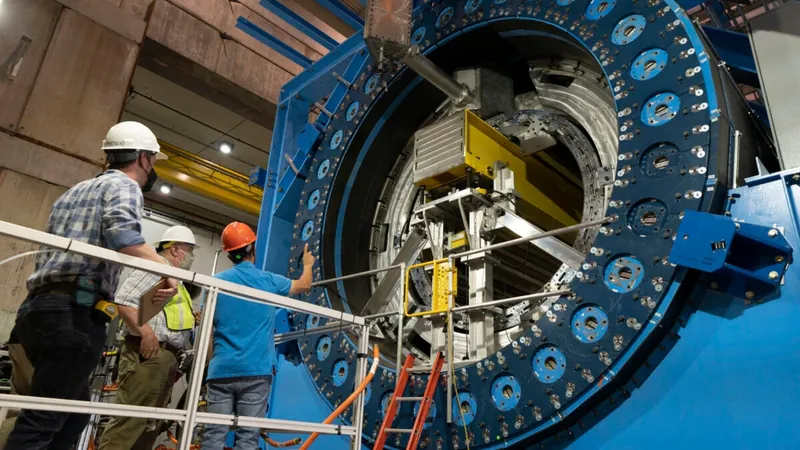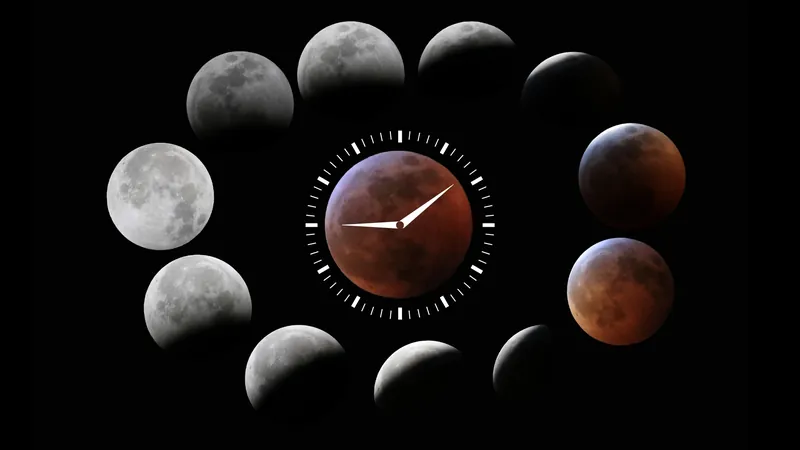
New York's 'Big Bang Machine' Breaks Ground with First Successful Test!
2025-09-03
Author: Ling
Unlocking the Universe's Mysteries
The universe's secrets lie buried deep in the first moments of the Big Bang, and a revolutionary new device, the sPHENIX detector, is on the case! With only theories about those initial microseconds, researchers have been in a relentless search for answers, and this Long Island innovation could hold the key.
A Stellar Achievement
In a groundbreaking announcement, the sPHENIX Collaboration has successfully passed a pivotal "standard candle" test, demonstrating its ability to accurately capture the energy levels of gold ions colliding at nearly the speed of light. The team shared this exciting news in a recent publication for the Journal of High Energy Physics.
Meet the Marvel of Modern Science
Weighing in at a staggering 1,000 tons and standing two stories tall, the sPHENIX detector is no ordinary instrument. Equipped with cutting-edge technology, it can monitor an astonishing 15,000 particle collisions every second! This formidable device is an upgrade from the retired PHENIX detector at Brookhaven National Laboratory's Relativistic Heavy Ion Collider (RHIC).
What Comes Next?
The success of this initial test fuels excitement for future endeavors. According to Gunther Roland, a physicist at MIT involved with the project, this achievement is akin to launching a new telescope into space and capturing its first breathtaking image. While it may not unveil entirely new phenomena just yet, it signals readiness for groundbreaking scientific exploration.
The Fiery Origins of Our Universe
Quarks and gluons, the building blocks of protons and neutrons, are almost inseparable—unless you recreate the extreme conditions of the Big Bang! During that explosive moment, quarks and gluons existed freely in a swirling, dense plasma known as quark-gluon plasma (QGP). The RHIC simulates these early universe conditions by colliding particles with immense energy, creating brief moments of QGP.
The Quest for Knowledge Continues
The implications of the sPHENIX's successful testing are monumental, as the team aims to examine the particles produced from these collisions to better understand the fleeting QGP. As Cameron Dean, a postdoctoral researcher with the collaboration, notes, the sPHENIX acts like a colossal 3D camera capable of tracking the behavior of particles in unprecedented detail.
The Future Awaits
Although the sPHENIX requires extensive maintenance due to its sophisticated features, optimism fills the air as it embarks on its mission. Currently, it is busy gathering data during RHIC's 25th and final run, before the upcoming Electric-Ion Collider takes over.
As Dean cheerfully states, "The fun for sPHENIX is just beginning!" This innovative detector promises to unlock the universe’s deepest secrets and turn scientific dreams into reality.




 Brasil (PT)
Brasil (PT)
 Canada (EN)
Canada (EN)
 Chile (ES)
Chile (ES)
 Česko (CS)
Česko (CS)
 대한민국 (KO)
대한민국 (KO)
 España (ES)
España (ES)
 France (FR)
France (FR)
 Hong Kong (EN)
Hong Kong (EN)
 Italia (IT)
Italia (IT)
 日本 (JA)
日本 (JA)
 Magyarország (HU)
Magyarország (HU)
 Norge (NO)
Norge (NO)
 Polska (PL)
Polska (PL)
 Schweiz (DE)
Schweiz (DE)
 Singapore (EN)
Singapore (EN)
 Sverige (SV)
Sverige (SV)
 Suomi (FI)
Suomi (FI)
 Türkiye (TR)
Türkiye (TR)
 الإمارات العربية المتحدة (AR)
الإمارات العربية المتحدة (AR)